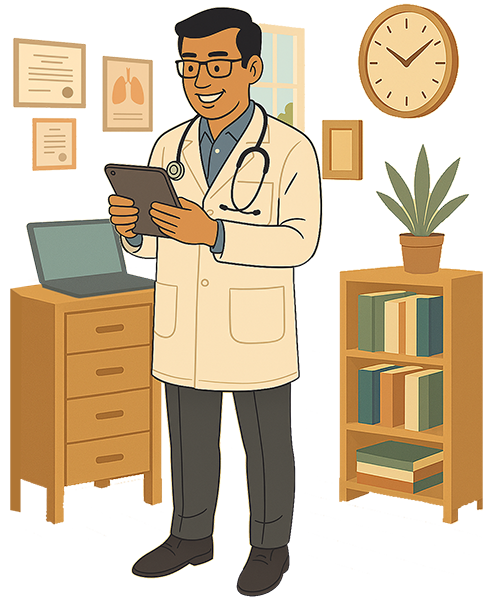The shift to make healthcare less paper based and more digital is the way forward in healthcare service, to be able to integrate health systems with the patient at heart but most importantly without losing the human touch. An Electronic Health Record is not only just a patient chart made available digitally that displays all medical and care history but a portal that coordinates across health systems with an ease of use*1. There are different types of 'interoperability' in healthcare including functional, structural and organizational to establish data exchange channels, data segregation and people management respectively*1. Since the advent of EHR's in the system, many questions have been raised regarding the use and safety of implementing a digital line of communication between departments*2. Patients, clinicians, pharmacists, laboratory technicians and house - keeping / administrative staff included each contribute their own to the functioning of a healthcare system and unique, personalized dashboards that cater to individual role and need remains one of Agastha's USP.
However the question remains-What is Interoperability ?
"From a technological standpoint, EHR interoperability can be defined as "the ability of two or more applications to communicate effectively without compromising the content of the transmitted EHR" *2. Interoperability in healthcare is the fastest and most safe way of transmitting medical information electronically to concerned departments. Sustainable treatment plans and more effective healthcare practises get transmitted with taking patient data and communication online thereby reducing costs, powering healthcare efficiency and improving patient experiences overall.

A growing market demand to service interoperability between departments seamlessly, Health tech enablers like Agastha break the barriers to operate as standalone or multifunctional digital partners to healthcare organizations be it a clinic, multi-specialty hospital, laboratory and pharmacy alike. We go the extra mile to ensure our client demands and needs are met consistently. A cohesive data model that not only builds a communication channel between care providers and seekers but also has a futuristic vision to obtain meaningful and resourceful evidence backed research solutions through our Artificial Intelligence and Machine Learning capabilities. At present, the large population that seeks medical guidance and the kind of data that is available is large but inconsistent and adopting a single unified network that pools information and bridges the gap in servicing reduces both the workload on HR and is time saving*3. Simultaneously the over bearing costs on paperwork and data management is reduced drastically with the introduction of the cloud-based registry with 24* 7 customer support provided by the vendors at backend. A functional EHR system will address the following features*3:
- User & department scalability
- Quality and regulatory compliance
- Cloud based & indefinite data security
The ability of an organization to deliver a strong foundation, an operating system to add the growing building blocks in the healthcare continuum including ambulatory care, emergencies, blood bank management, reduce transaction times and make a patient visit to their doctor's a happy and hassle free is the need of the hour.


Interoperability as a concept has evolved over time. The Healthcare Information and Management Systems Society (HIMSS) previously outlined three types of data exchange: foundational, structural, and semantic They then redefined the term in 2019 by adding organizational interoperability

In summary, EHR's are not just data repositories but multiway channels for clinical communication that allow patient information to be transmitted in a secure manner, automated critical alerts, notifications and messaging for laboratory, pharmacy and payments. Clinicians, patients and care providers can access and monitor health progress, chat functionality integrated and makes notes accordingly from anywhere across devices using their personalized login credentials*4. The shift from paper-based models to digital patient charts has been in progress for over two decades. With surging technological advances, electronically communicating secure information to relevant profiles has been made easy, happy patients and healthcare organizations running their faculty within budget with state of art facilities and leading the pack in regulatory compliances.
- *1Demigos. Blog: Interoperability in Healthcare: Challenges, Solutions & Examples. 2024 Interoperability in Healthcare: Challenges, Solutions and Examples (demigos.com)
- *2Li, Edmond; Clarke, Jonathon; Ashrafian Hutan;Darza, Ara; Neves, A.L. The Impact of Electronic Health Record Interoperability on Safety and Quality of Care in High-Income Countries: Systematic Review. 2022. National Library of Medicine. The Impact of Electronic Health Record Interoperability on Safety and Quality of Care in High-Income Countries: Systematic Review - PMC (nih.gov)
- *3itransition. Ivanov, S; 2023. EHR interoperability: benefits, barriers and best practices. EHR Interoperability: Benefits, Standards, and Barriers to Overcome (itransition.com)
- *4 Alder, Steve. 2023. The HIPAA Journal. EHR Interoperability. EHR Interoperability (hipaajournal.com)



